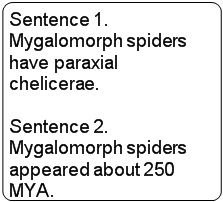The Science Of Scientific Writing Set D Introduction Multi-part Sentences The End of the Sentence Exercise 1 The Start of the Sentence The Middle of the Sentence Sentence, Paragraph compared Mapping Multi-part Sentences Exercise 2 Types of Sentence Part Exercise X Advanced Sentence Stories Final Page .
OVERVIEW: The way to well-written science
PART I: Paragraphs and Sentences
SET A: Paragraphs: The Maps Behind Them
SET B: Paragraphs: Using Maps to Meet Readers' Expectations
SET C: Paragraph Coherence and Cohesion
SET D: Sentences
SET E: Scientific Sections (including Methods)
SET F: Scientific Sections: The Discussion
SET G : Scientific Sections: The Introduction
SET H : The Paper as a Whole
Exercise 1
Group 1
In this first group of exercises you must combine a number of sentences into a single multi-part sentence. The sequence of sentence parts should follow the sequence of appearance of the original sentences in the maps provided (following our usual sequence-system).
To reduce the amount of typing you need to do, you can drag the maps to the Rationale workspace (you must use Rationale's inline browser).
Worked Example:
Text: A most curious animal, the egg-laying platypus is considered a mammal because it has fur and suckles its young, two features considered diagnostic of a mammal.
Group 1 Exercises
A.
B.
C.
Group 2
In this second group of exercises you must also combine a number of sentences into a single multi-part sentence. But in this group, you must compose multiple versions of each set, either two or three, depending on whether you are given two or three sentences to begin with.
To reduce the amount of typing you need to do, you can drag the maps to the Rationale workspace.
Worked Example:
Version 1: Mygalomorph spiders, which appeared about 250MYA, have paraxial chelicerae.
Version 2. Mygalomorph spiders, which have have paraxial chelicerae, appeared about 250 MYA.
Group 2 Exercises
A.
B.
C.
D.
......








